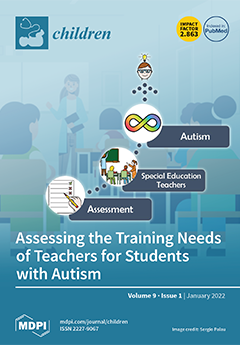We conducted this study to investigate the associations between hematological parameters and obesity in children and adolescents. The levels of hematological parameters (including white blood cells [WBCs], red blood cells [RBCs], hemoglobin [Hb], hematocrit [Hct], and platelets) of 7997 participants (4259 boys and
[...] Read more.
We conducted this study to investigate the associations between hematological parameters and obesity in children and adolescents. The levels of hematological parameters (including white blood cells [WBCs], red blood cells [RBCs], hemoglobin [Hb], hematocrit [Hct], and platelets) of 7997 participants (4259 boys and 3738 girls) aged 10–18 years were recorded. The parameters were compared among participants with normal weight, overweight, and obesity. Significantly higher mean levels of WBCs (7.16 vs. 6.16 × 103/mm
3,
p < 0.001), RBCs (4.90 vs. 4.82 × 106/mm
3,
p < 0.001), Hb (14.07 vs. 13.99 g/dL,
p < 0.05), Hct (42.31 vs. 41.91%,
p < 0.001), and platelets (311.87 vs. 282.66 × 103/mm
3,
p < 0.001) were found in the obese than normal weight group, respectively, after adjusting for body mass index (BMI) and sex. BMI SDS had significant positive associations with the levels of WBCs (β = 0.275,
p < 0.001), RBCs (β = 0.028,
p < 0.001), Hb (β = 0.034,
p < 0.001), Hct (β = 0.152,
p < 0.001), and platelets (β = 8.372,
p < 0.001) after adjusting for age, sex, and socioeconomic factors in a multiple linear regression analysis. A higher BMI was associated with elevated WBC, RBC, Hb, Hct, and platelet counts in children and adolescents. Because higher levels of hematological parameters are potential risk factors for obesity-related diseases, hematological parameters should be evaluated in obese children and adolescents.
Full article






